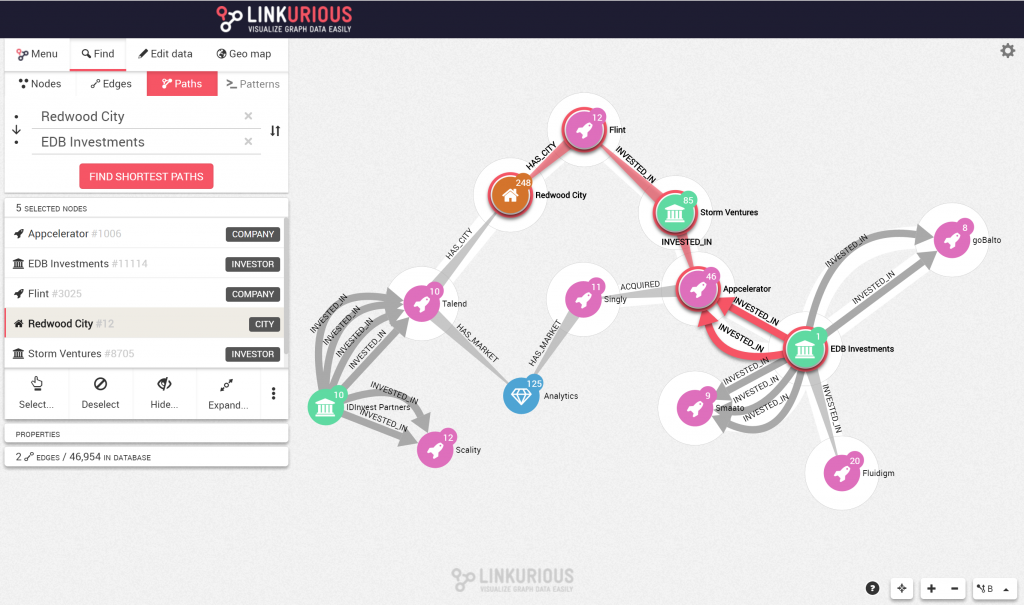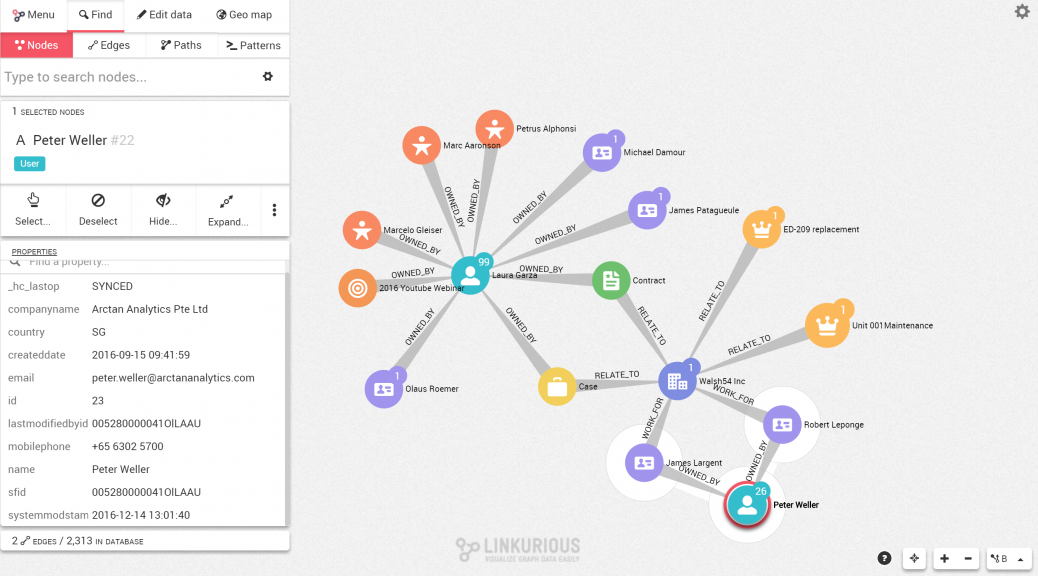
Explore Salesforce CRM connected data with Linkurious
In this blog post, we explain how we integrated Linkurious with Salesforce’s Customer Relationship Management (CRM) solutions to leverage the power of graph analysis.
What’s Linkurious
Linkurious is an award winning graph visualization startup based out of Paris. Their flagship product, Linkurious Enterprise, helps government agencies and Fortune 500 companies identify and investigate insights hidden in complex connected data. It is used in anti-money laundering, cyber-security, metadata management or medical research. Recently, Linkurious helped the ICIJ network of 370 journalists investigate the Panama Papers. Compatible with graph databases (AllegroGraph, DataStax, Neo4j, Titan). Linkurious Enterprise is an on-premise web application with advanced security features and an extensible API.
What’s Salesforce CRM
Salesforce CRM is the leading CRM cloud-based software. It is designed to help companies manage relationships with prospects and customers, collaborate and engage with employees and partners, and store data securely in the cloud. It takes all of the important data (contacts, emails, follow-up tasks, prospective deals …) and organizes it into a simple user interface that can be accessed anytime, anywhere, whether on desktop or mobile.
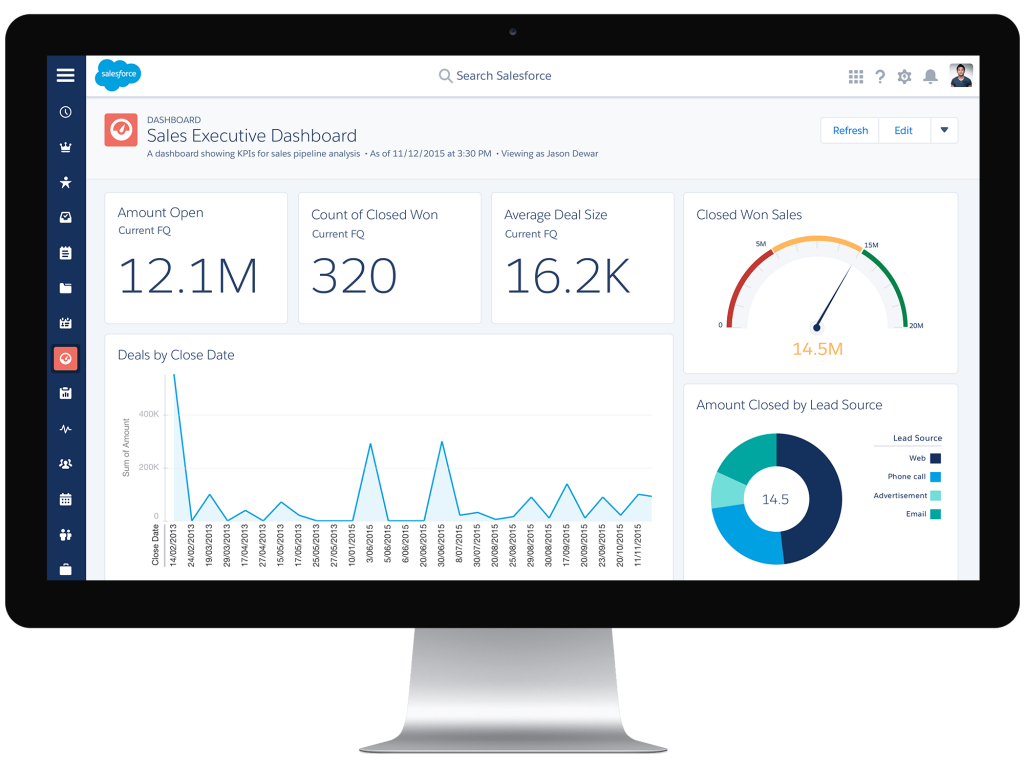
Salesforce is a customer centric platform. As such, all data is directly or indirectly connected to customers. In general, there are many other ad hoc relationships. In particular, each piece of data in the platform has a designated owner. As a consequence, it’s a natural candidate for graph analysis and visualization.
Integrating Salesforce with Neo4j and Linkurious
To create the bridge between Salesforce and Linkurious, we started with Heroku, which is a platform as a service (PaaS) that enables developers to deploy web applications and that was acquired by Salesforce in 2010. We used the following add-ons:
– Heroku connect (Salesforce Data Synchronization Service)
– Heroku Postgres (database as a service based on PostgreSQL)
– Graphene DB (Neo4j Graph Database as a Service)
Relying on Heroku platform and its third-party add-ons allowed us to quickly have a scalable, cost efficient and easy-to-deploy solution. We added to the platform a custom application in Java to import data from the Postgres database and create nodes and relationships in the Neo4j graph database.
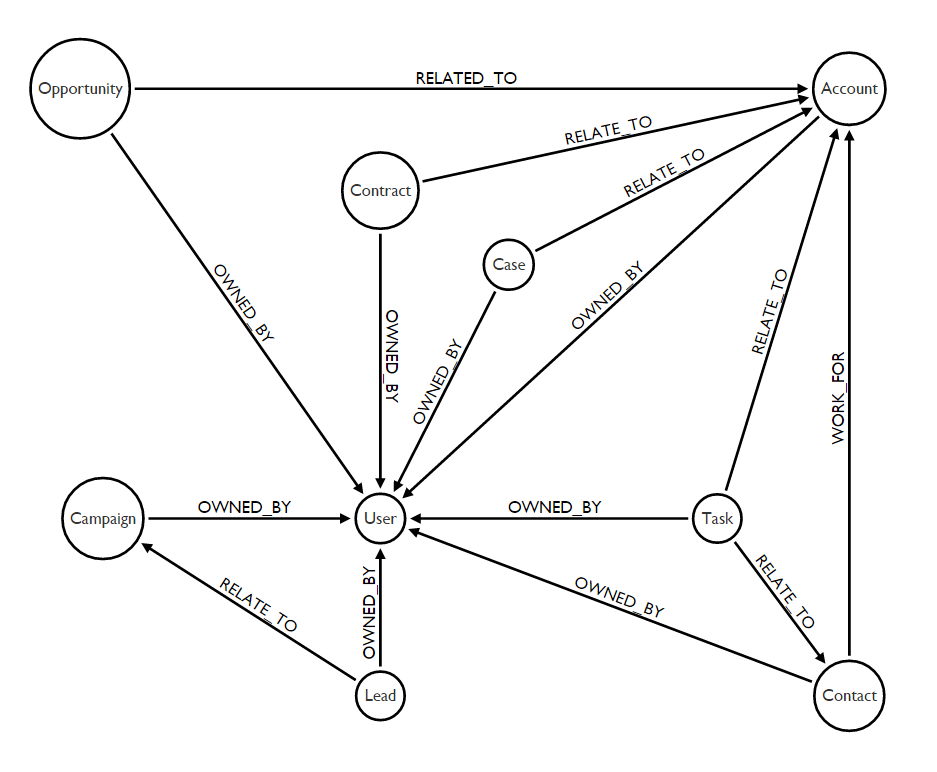
Linkurious works out of the box with Neo4j and provided an easy way to analyse the hidden connections in our Salesforce data. We customized Linkurious nodes design to give the feel and look of Salesforce’s interface. With this integration, it is easy to use graph visualization with Salesforce and find new insights.
Leverage the connections of your data with Linkurious
Salesforce intuitive interface makes it easy to navigate and interact with connected data, one piece at the time. The Salesforce / Linkurious integration allows to go even further and provide visualization of entire sub-sets of connections. Answering day-to-day questions becomes much easier. What data a salesperson is interacting with? Who within the organization is interacting with this customer? Finding unexpected connections between people, organizations or locations can be the difference between selling or not selling, achieving high customer satisfaction or not.
In the scenario below, we are interested in the existing relationships around a particular Salesforce user named Laura Garza.
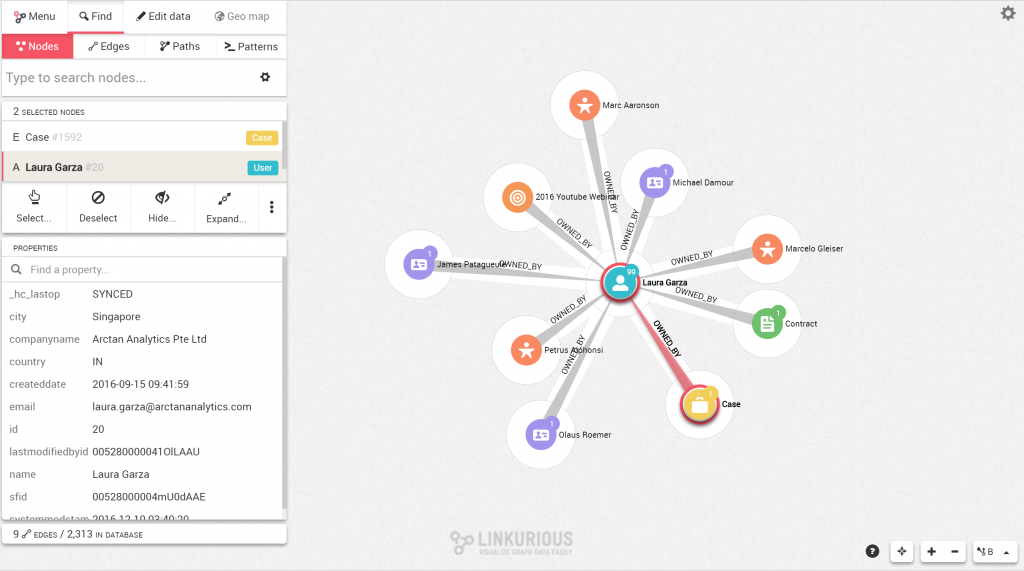
Laura owned many Salesforce records (account, contacts, leads, campaign …). Among these records, we note that she owns a contract and a case (customer support incident) with a medium priority (one of the node property).
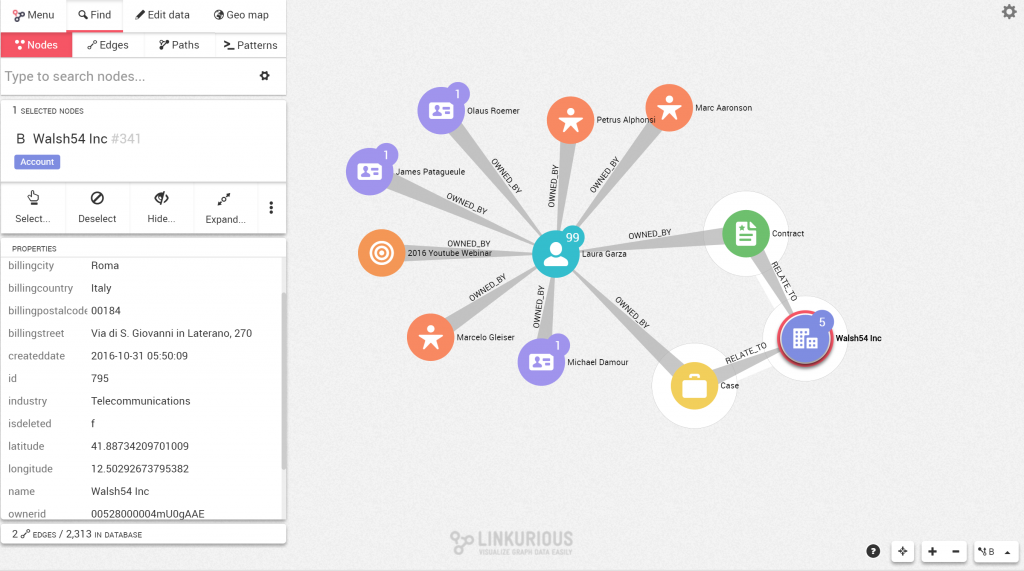
They both relate to the company Walsh54 Inc. With a simple double click on the company node, we open all of this node’s relationships.
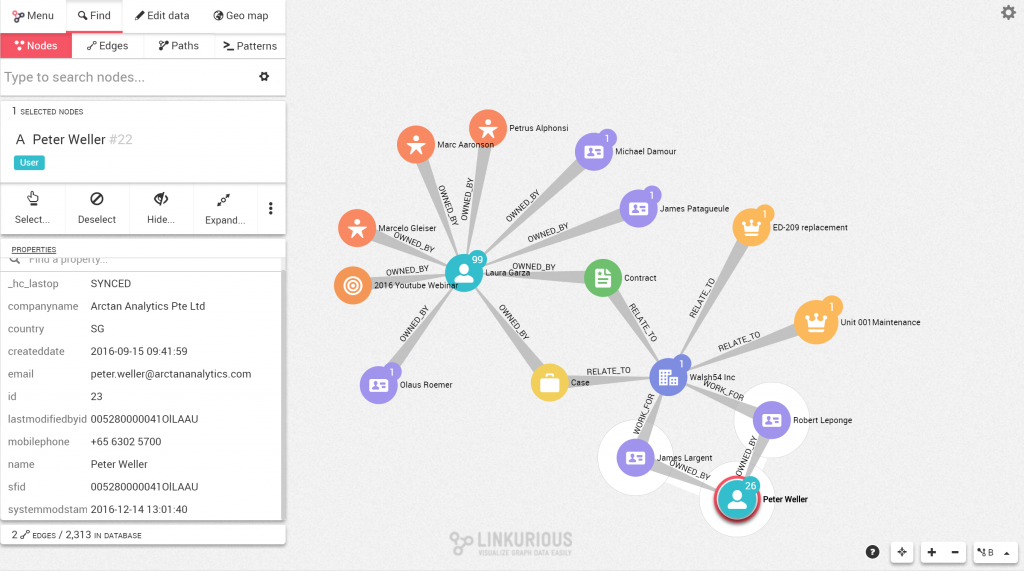
We see two contacts, Robert and James, who work for Walsh54 Inc and we open their relationships as well. Now we have a clear picture of what is going on with this particular customer and who are the Salesforce users that needs to collaborate on the case to deliver well rounded customer experience.
Find connections to generate more opportunities
In many large organization, the holy grail of revenue generation is trying to capitalize on existing relationships and drive cross-sell and up-sell opportunities. Finding the shortest path between salespersons and particular customers can help enable these opportunities and make cold calls something of the past.
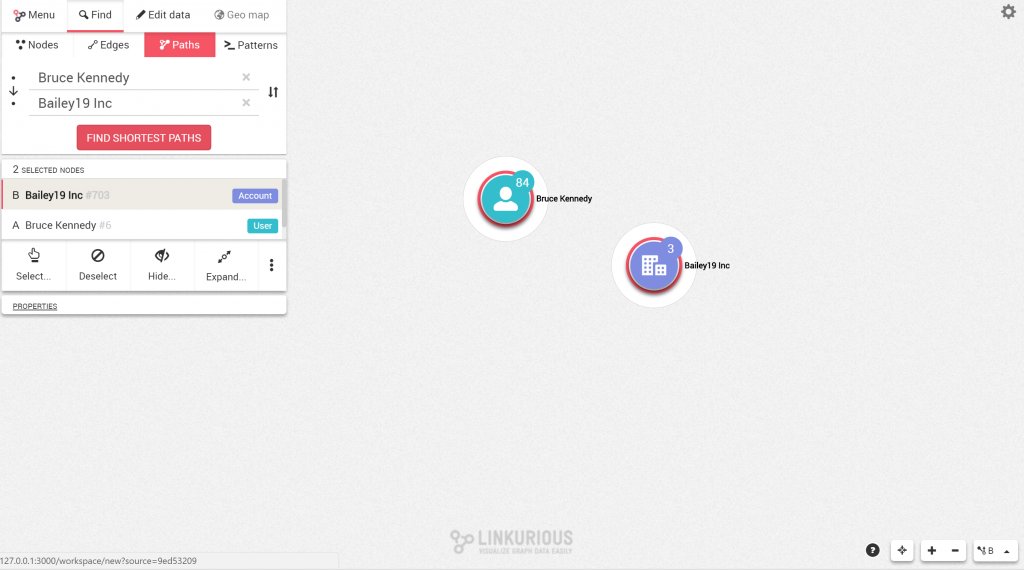
In the above example. we are looking at the shortest path between a Salesforce user name Bruce Kennedy and a company named Bailey19 Inc.
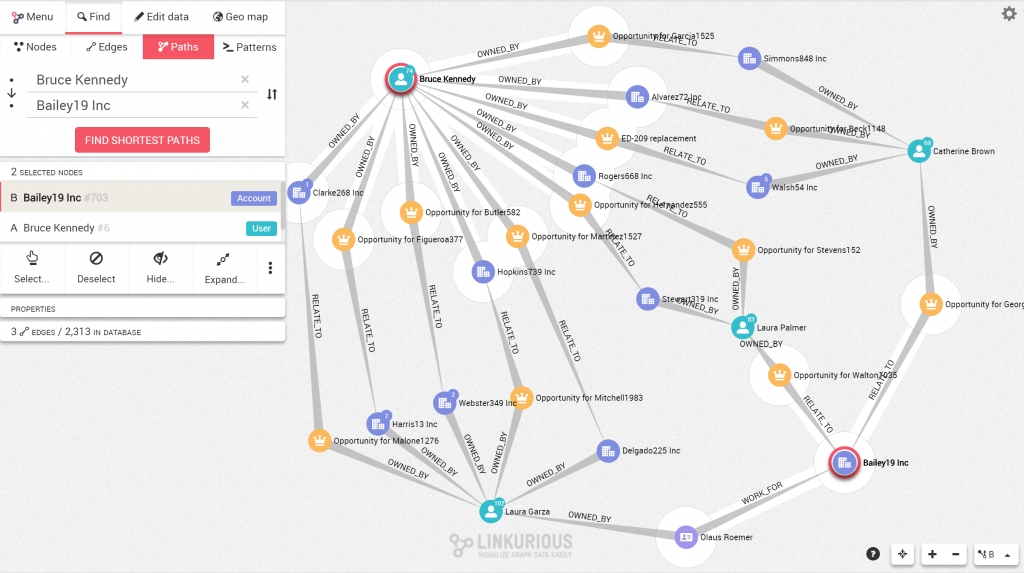
The result of the query suggests that three users, Catherine Brown, Laura Garza and Laura Palmer, interact with this company. Bruce has some level of indirect interaction with them. Not only Bruce now knows who among his colleagues can help introduce him to the targeted company but he has a better knowledge of its own interactions with the aforementioned colleagues, leading the way for improved operational efficiency.
Sale smarter with Linkurious / Salesforce integration
CRMs are great tools for companies to develop strong and lasting relationships with their customers. They enable their sales teams to access information-rich customer profiles, to keep track of deal opportunities, to manage leads and partners, to collaborate on sales cases… However, despites dealing with massive volume of highly connected data through their CRM, companies still cannot leverage these connections.
With the Linkurious / Salesforce integration, now they can. Graph analysis gives them a higher understanding of sales context which allows them to take smarter decisions. Link analysis methods, such as pathfinding methods, expose new connections within a sales ecosystem in a glimpse. Understanding the connections within sales data is definitively one step toward better personalization of customer relationships and, in such a connected world, it might even be the ultimate key to close sales.
